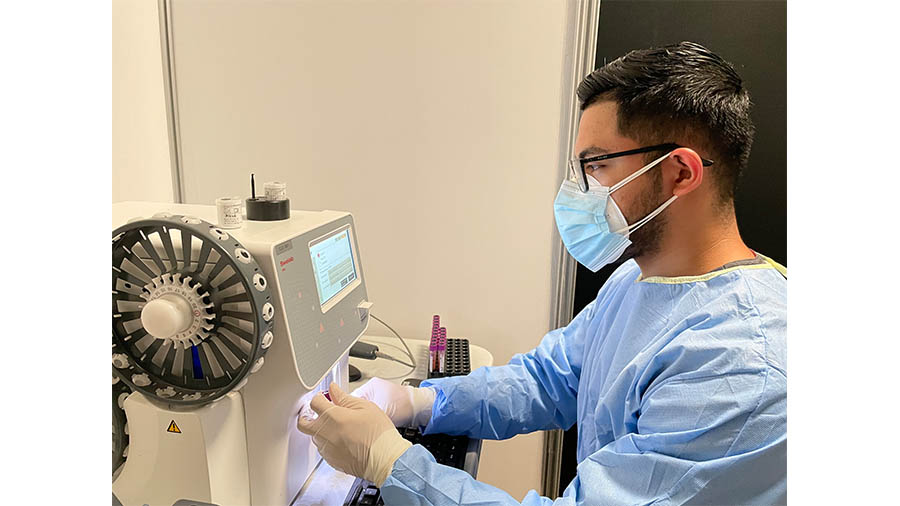The COVID-19 outbreak poses challenges to diagnostic testing. A large number of patients needs to be screened to distinguish virus infected patients from healthy individuals. Techniques widely used in virus detection are PCR and nucleotide sequencing. However, such methods can be both costly and time consuming. Additionally, sample collection is typically done by nasal swabs, which can be difficult to perform and inconvenient for the patient.
A complete blood count can help spot new coronavirus cases
For practical and efficient screening of large populations for viral infection, reports from China recommend including white blood cells (WBC) and C-reactive protein (CRP) in laboratory examinations for early monitoring of infection (1,2).
For practical and efficient screening of large populations for COVID-19 infection, reports from China recommend including white blood cells (WBC) and C-reactive protein (CRP) in laboratory examinations for early monitoring of infection (1,2).
“Many factors contributed to developing our clinical algorithm in Wuhan during the early outbreak period”, Zhang and colleagues at the Department of Emergency Medicine, Union Hospital, Wuhan, China explain in an article in The Lancet (2). “During this time, the influx of patients to fever clinics substantially outweighed the number of physicians. Inpatient care was unsafe due to potential cross-infection and supplementary resources were not ready. Applying and waiting for results of a SARS-CoV-2 test was time consuming just after the outbreak and did not aid clinical decision making.”
A complete blood count (CBC), reporting also a WBC differential, can be both a rapid and cost-efficient tool for detection of viral infections (3).
Application in Honduras
Honduras is a country that has been hit hard with COVID-19 infections. Temporary tirage and testing centers are established throughout the country to cope with the increasing number of cases.
“A blood count is a reliable, low-cost, and immediate reading test that helps us in the screening of people suspected of being infected by SARS-COV-2, and it is one of the first filters we use in decision-making”, says Dr. Fernando Bonilla, Clinical Microbiologist at Permanent Contingency Commission, Triage Center Honduras. “Depending on the results of this and other laboratory exams (e.g., CRP), we use a confirmatory test for the final diagnosis of the patient. Thus, we have managed to contribute to an efficient use of the resources that are available in the temporary COVID testing centers in Honduras.
Once we confirm a person positive for SARS-COV-2, we carry out a routine follow-up that usually includes up to three blood counts during the patient’s convalescence. By interpreting the results, we can see how the patient’s immune system is dealing with the viral infection and prepare for different scenarios, from cases that can be discharged soon to cases that may require intensive care.
One of the most relevant parameters in SARS-COV-2 cases is the lymphocyte count, as these cells are the subgroup of white blood cells responsible for the management of infections caused by viral agents. In confirmed cases, we want to see an out-of-range count on the upper limit, which is indicative of an immune response in-line with the infection. A sudden drop in this population triggers an alarm that the patient could be entering into an acute phase of the disease. Another important parameter in the study and management of positive cases is the platelet count. We have noticed that, in many serious cases, there is a clearly lower count that is outside of normal ranges.
With Swelab Alfa Plus, we have a highly reliable instrument, easy to use, with an autoloader for the automated handling of a significant number of samples, and with the capillary blood functionality for urgent cases that require an immediate count and where a tube of venous blood sample is not necessarily available. In such cases, we can use a drop of blood from the patient’s finger to obtain a hemogram with 22 parameters in one minute.”
